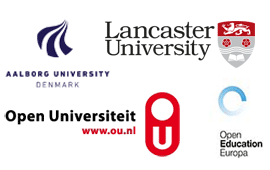

Teaching Presence in MOOCs: Perspectives and Learning Design Strategies
Suzan Koseoglu, Department of Curriculum and Instruction, University of Minnesota. Apostolos Koutropoulos, Department of Applied Linguistics, University of Massachusetts Boston
Despite the rapid growth of massive open online courses (MOOCs) in recent years, a fundamental question is still being debated widely in the education community: how to design and deliver MOOCs and move them away from the banking model of education (Freire, 1974), in which the teacher has traditionally been the central authority. Our goal in this paper is to improve the MOOC pedagogy through the lens of teaching presence. We argue that teaching presence is much more than just a facilitation strategy; rather, teaching presence is about creating a meaningful and receptive relationship between and among learners. To accomplish this we propose that instead of a single facilitative role there is a diversity in teacher roles. Teachers can themselves become learners in their own classrooms, as well as enabling and encouraging learners also take on the role of teachers in this open learning process. This leads us to propose the notion of hybrid presence, a construct that emerges out of authentic relationships among esteemed co-learners (Rheingold, 2014) in an open educational environment. This hybrid presence is particularly evident in community-based MOOCs. To aid in the design and facilitation of such MOOCs we propose three interrelated learning design principles aligning with the notion of hybrid presence: prepare to cede authority, embrace plasticity, and be present with fellow learners.
All the learning design principles we propose highlight approaches that are responsive to the affordances of connectivity and diversity on the World Wide Web. In the first principle cede authority we suggest that MOOC instructors see themselves as conveners of MOOCs, and that they see the learners as co-learners in their educational journey. The second principle embrace plasticity draws attention to the importance of being receptive and responsive to the direction and nature of learner voices in distributed networks. Finally, in the last principle be present with fellow learners we suggest using tools that foster mutual empathy and awareness for both learners and teachers to be present in the environment in authentic ways. Each principle is illustrated with specific examples from different types of community-based MOOCs, such as Change11 MOOC, Rhizomatic Learning, MobiMOOC 2011, and UNIV 200: Inquiry and the Craft of Argument.
Keywords
Hybrid presence, instructional design, learning design, massive open online course, MOOC, open pedagogy, teaching presence, teacher roles
Joint Organising Institutions
| Conference Travel and Accommodation |Doctoral Consortium | Past Conference Proceedings | Contact |